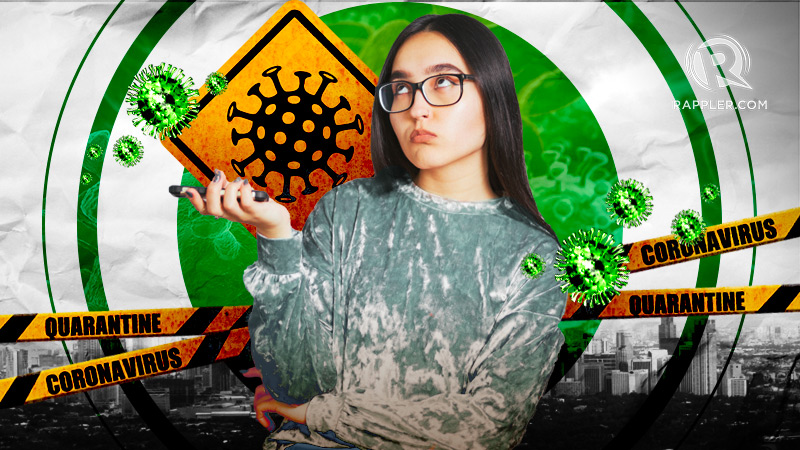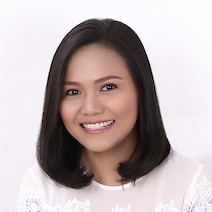

Today, every risk one takes is a risk shared by many.
The problem is, many of us still think that we are just like branches of a tree, largely connected, but remaining intact even if one falls off.
Reality tells us we should think of ourselves as a flame in the middle of a forest, capable of starting an uncontainable fire.
Luzon has been placed under enhanced community quarantine to suppress the spread of COVID-19, but some of us still refuse to cooperate due to non-essential reasons, creating an “outbreak” within an outbreak. The Philippine National Police recorded 69,089 violators of the quarantine measures from March 17 to 29. (READ: Duterte extends Luzon lockdown until April 30)
A COVID-19 patient escaped a hospital in Bicol. A senator violated quarantine protocols. Neighbors dare to roam empty streets. Play basketball. Go to open parks.
More violations may happen, when people begin to experience different forms of fatigue, such as confinement fatigue, donor fatigue, and the worst of all, moral fatigue.
Not all risks bring rewards, so we can only choose the ones worth taking. We are forced to act on some in order to survive. Understanding how we discern and decide on taking risks can help us manage them.
Before the outbreak
Our biases and emotions affect our decision making. The core, presentation, and availability of information can invite obedience or doubt. Our disposition is a mirror of our lifestyle, experiences, skills, and environment. Soldiers cope better with difficult situations because they are skilled and trained, but how about the rest?
Some people tend to deny the crisis. Some speculate on its source. They see it as a laboratory experiment, a political tactic, the beginning of a war, or the end of the world. Maybe because we are intimidated by science or a challenge bigger than humanity. Or it pierces through the image of ourselves that we are invincible. For some, it could be because their lives simply depend on their jobs which the outbreak put to a halt. Or maybe we are tired of processing too many decisions. (READ: 'Walang-wala na': Poor Filipinos fear death from hunger more than coronavirus)
“Our brains are naturally wired to reduce that complexity by using mental shortcuts called heuristics,” Eric Wargo wrote in The Mechanics of Choice. As mental shortcuts, heuristics prevent us from digging deeper and paying more attention to our surroundings.
For example, the availability heuristic makes us judge something based on the information we can easily access from our memory. Widely reported events such as typhoons can make us believe that they are more probable than a virus outbreak that could paralyze public life.
Anchoring, another heuristic, basically means making a decision based on a past event or trend. In responding to the outbreak, the Philippines is expected to consider what countries like South Korea have done to slow the spread of the virus. But we also consider factors like our culture, our available resources, and the quality of governance.
How we perceive a risk depends on its distance from us. “It’s happening in bigger cities, but I’m in a quiet small town so I can’t get infected.”
Some risks are dismissed due to the impression that they lack urgency. “The number of cases is not swiftly rising; why impose a travel ban right away?”
During quarantine
Confinement and self-isolation can increase the risk of psychological distress and even health problems. This can shroud our views and decisions.
Meanwhile, to say that we have bouts of carelessness and rebellious tendencies because our brains work differently during crisis is convenient. But convenience doesn’t always bring out the best in us.
As Dr Marwa Azab, an adjunct professor of psychology at California State University, Long Beach, writes in Psychology Today, “Higher decision-makers such as the frontal cortex are connected to lower emotional parts such as the amygdala.”
“These lofty brain parts put the brakes on when the emotional parts get overwhelmed. In emergencies, the amygdala takes the driver’s seat and ejects many false positives.”
On the other hand, regularly consuming hard facts and numbers is not always ideal. Visceral information works in certain conditions. “In the health arena, this may involve appealing to people’s gist-based thinking,” Wargo wrote.
Citing a study held by Cornell University psychologist Valerie Reyna, Wargo pointed out that presenting the gist of facts could discourage patients from delaying important decisions: “’You’re at (some) risk, you should get screened because it detects disease early’ may be a more powerful motivator to make the right decision than the raw numbers.”
Post-coronavirus
Beyond ourselves, there are much bigger risks to manage. One already spiraled into our conundrum today: We ignored a study in 2007 that warned us about the viruses from animals that could spread.
The exponential growth curve is loaded with risks. We are not prepared for prolonged self-quarantine, massive economic disruption, and efficient treatment of thousands of infected individuals as well as patients with diseases not related to COVID-19.
Public leaders who fail to step up at a time people when need more than just speeches are walking risks. US President Donald Trump previously pushed for a reopening of the economy and described having deaths of between 100,000 and 200,000 in the US “a very good job.” In the Philippines, President Rodrigo Duterte invoked his emergency powers without clear and complete guidelines. On March 30, he announced that a P200-billion fund will be given to low income-households. While it is a critical point, the rest of the speech gave nothing new.
The disorganization and dubious measures could create further confusion and resistance to government initiatives. Aside from corruption, the risk of the lack of transparency and accountability during a crisis is it might become too common that we would no longer seek them.
Trusting or not trusting the government is a risk that will be felt more by health workers, who are uncertain if they would or when they would receive medical supplies. Dying for the country while doing a noble job in a well-equipped facility with fair compensation is not the same as dying while doing a noble job in an environment where the government failed to mitigate the risks.
Even the onerous development of a vaccine is marred by risks, not only those in clinical trials but also in the vaccine’s approval, manufacturing, distribution, and the silent competition brewing among powerful countries like the US and China.
What we should do
In decision making, Wargo advises being open to different options and considering all angles.
Hence, we must acknowledge our fears, risks, and challenges so we can accept, weigh, and act on them. Harmonize intuition and facts. Bind them with empathy and creativity.
“Messages framed in terms of social norms – 'the majority of guests in this room reuse their towels’ – were more effective than messages simply emphasizing the environmental benefits of reuse,” Wargo wrote.
He also recommends the power of defaults which appeals to “our natural laziness.” In a crisis, the default option for the public should be to stay at home. Going out is optional.
When this is over, the risk of experiencing another pandemic would be highly relevant and key sectors involved in emergency preparation will receive more attention. An ideal situation is using these new lessons in discussing other subjects, like governance, debt accumulation, and climate change. Taking these issues lightly has consequences.
K.C. Cole, in her essay “Calculated Risks,” said that people believe nothing would happen to them if it hasn’t happened yet.
“’I’ve been taking the highway at 80 miles per hour for 10 years and I haven’t crashed yet,’ we tell ourselves. This is rather like reasoning that flipping a coin 10 times that comes up heads guarantees that heads will continue to come up indefinitely,” Cole wrote.
We should know by now that the cunning COVID-19 virus was never the heads nor the tails.
It was the coin all along. – Rappler.com
Len Cristobal is a freelance writer and author of the book Breakaways. She has written about politics, economy, education and art for local and international publications.